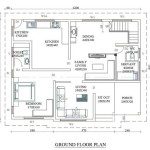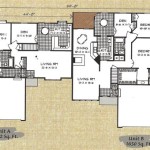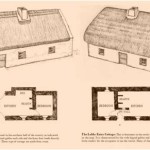Plot Plan For My Home: Essential Considerations
A plot plan, also known as a site plan, is a schematic representation of a piece of land and the structures on it. It serves as a vital tool for planning and designing your home, ensuring it aligns with your needs and the surrounding environment. Here are some essential aspects to consider when creating a plot plan for your home:
1. Property Lines and Boundaries
Accurately defining your property lines and boundaries is crucial. This information can be obtained from a land survey or property deed. Ensure the plot plan clearly shows the boundary lines and dimensions to avoid any potential disputes or encroachments.
2. Existing Features
Identify and mark all existing features on the property, such as trees, water bodies, fences, and any structures or utilities. These elements can influence the placement and design of your home, as well as the overall landscape.
3. Building Envelope
The building envelope refers to the designated area within the property where construction is permitted. It is determined by factors such as zoning regulations, setbacks, and building codes. Defining the building envelope ensures your home complies with local regulations and fits harmoniously within the surrounding area.
4. Home Placement
Consider the orientation, size, and shape of your home in relation to the property. Factors to consider include sunlight, prevailing winds, privacy concerns, and views. Proper placement optimizes natural light, ventilation, and visual appeal.
5. Driveway and Parking
The driveway and parking areas should be designed for convenient access and adequate space for vehicles. Plan for the number of cars you typically have, as well as any additional parking needs for visitors or guests.
6. Landscaping and Outdoor Spaces
Incorporate landscaping into your plot plan to enhance the aesthetic appeal and functionality of your home. Consider outdoor living areas such as patios, decks, or porches. Plan for planting areas, walkways, and any desired water features.
7. Utilities and Services
Identify the location of utility services such as water, sewer, electricity, gas, and telecommunications. Ensure there is sufficient access to these utilities and plan for their integration into the home's design.
8. Topography and Drainage
Understanding the topography and drainage patterns of the property is essential for proper site preparation and water management. Consider any slopes, drainage channels, or potential erosion issues to ensure the home is built on a stable and well-drained foundation.
9. Future Development
Consider any potential future development plans, such as additions to the house or additional structures on the property. Leave adequate space and flexibility in the plot plan to accommodate potential expansions or changes.
10. Consultation with Professionals
Consult with professionals such as architects, engineers, and landscape architects to ensure your plot plan adheres to building codes, zoning regulations, and best design practices. They can provide valuable insights and guidance throughout the planning process.
By carefully considering these essential aspects, you can create a plot plan that seamlessly integrates your home into the surrounding environment, maximizes its potential, and meets your specific needs and preferences.

Site Plans What They Are And How To Create One
What Is A Plot Plan

Custom New House Plans

Site Plans What They Are And How To Create One

How Do I Build The Best Home In An Area Of 1500 Square Feet 30x50

Site Plans What They Are And How To Create One

Plot Plans What You Need To Know

House Plot Plans Design Tutorial Plan How To Your Own Home

15x50 House Design Plan East Facing Best For 750 Sqft Plot Size Https Www Makemyhouse Com 378 1 Narrow Plans Little Smart

What Are The Best House Plans Or Architecture For A 30 Ft X 40 Home








